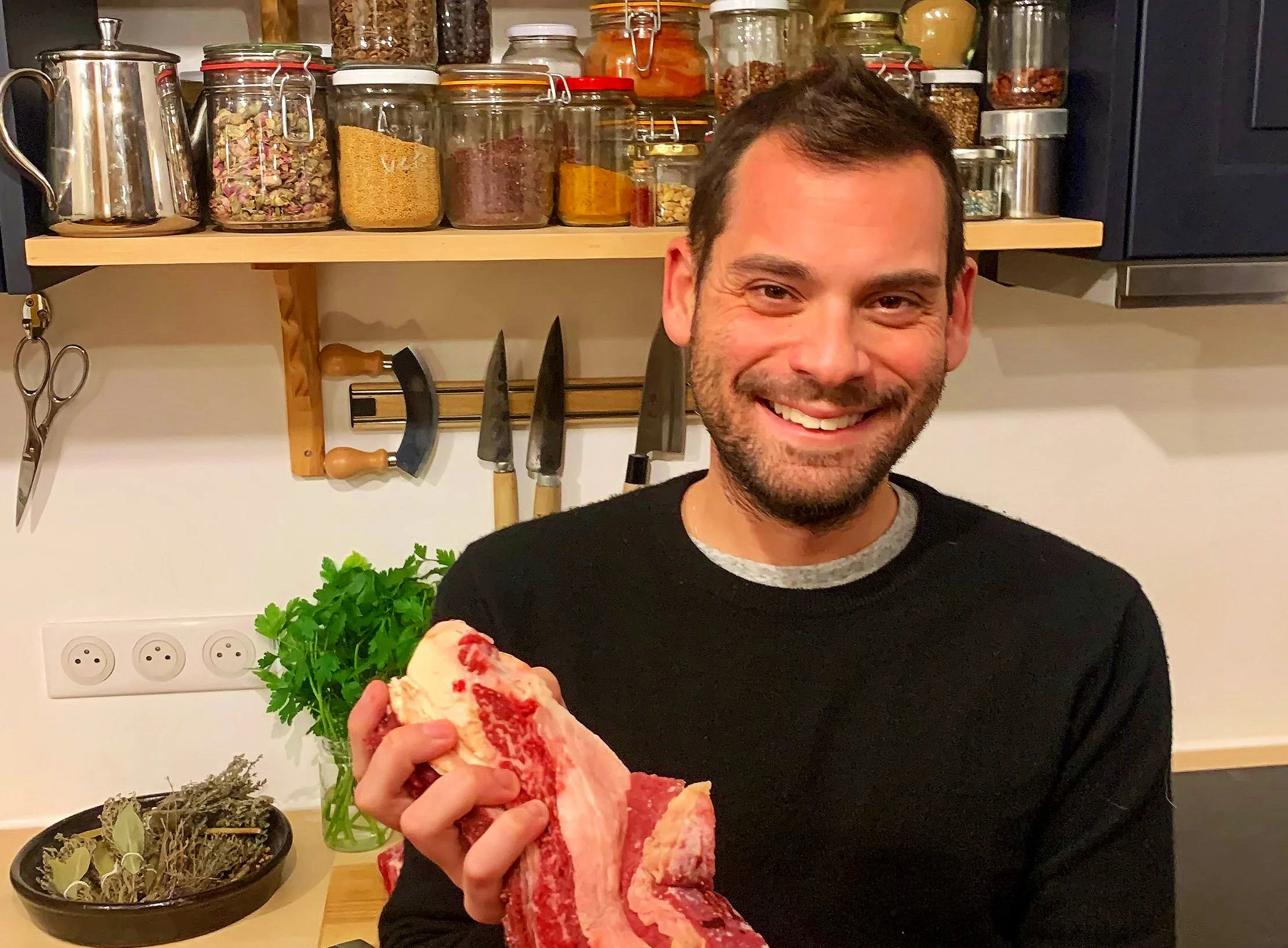An American Journalist Cooks in France
Pictured in my home kitchen, with a short rib.
From Provence, reinventing my childhood recipes
My Jewish mother was a terrible cook. She slathered brisket in ketchup and onion powder, she used cheap metal pots and never bothered simmering on low heat. This was something she inherited from her own mother, in suburban New Hampshire. Nana slogged white vinegar—nearly inseparable from the one she used for cleaning—into fried chicken liver and onions for lunch. Served on supermarket-wrapped white bread, predictably. My father never touched a stove in his life.
Regardless, I remain deeply attached to the recipes that give so much color to the way that I grew up. Ashkenazi Jews from Poland and Belarus, my family settled in Massachusetts around 1900 after fleeing the pogroms. I was raised in a Jewish area of Boston and I fondly tie my childhood to bagels and lox, thick potato pancakes in apple sauce and salty chicken soup topped with fluffy matzo balls (made by the deli, of course).
Having lived in the south of France since 2021, it’s hard not to notice the absence of these Jewish staples that we enjoy so easily in America. Most likely because of Frances’s geopolitical link with North Africa, and the amount of Sephardic Jews who emigrated from Algeria at the end of the colonial war in the 60s, its Jewish culture as a whole leans mostly Sephardic. Jewish food here as a result is more associated with tajine and stuffed vegetables, flavors coming from the Middle East and not eastern Europe. Away from the heart of Paris in the Marais district, it can be difficult to find a schmear or a chicken noodle soup.
So I recently started out on my own mission: introduce the delicious Ashkenazi food that I know and grew up with to the French people around me. I live in Marseille, France’s second city, a dense port with temperate seasons—where we’re gifted with open-air markets in most neighborhoods—and where people love to eat (and talk about it, all the time). Drawing on what I’ve learned from growing up with American Ashkenazim in New England, cooking with fresh ingredients in the south of France and my best attempts to stay both seasonable and sustainable, I’m updating old Jewish food for modern tastes. And I’m not messing too much with its fundamental DNA.
In November 2023, I decided to quit my full-time job to cook and realize this project to its entirety. I started a chat group with about 50 people living in Marseille—some friends, some ex-colleagues, some acquaintances that I barely even knew—and turned my apartment’s kitchen into a laboratory. For each recipe that I come up with, I post it to the chat group and invite a certain number of people to come over, try it out and give their feedback. Nothing ever goes perfectly, but it’s all part of the fun. This is where the recipes on the blog begin.
Some more about me: I am not a trained chef. I worked as a foreign correspondent in Asia for over a decade, and then transitioned into social work just after moving to France. I am self taught and I really took the time to nurture what I can do in the kitchen (an enormous privilege). For this reason, the recipes are also kept as simple as possible and should be able to be achieved by anyone. If something doesn’t have to be done—like starting with finely chopped onions, since quartered onions are better for most hearty Jewish recipes anyway—then it’s not going to be done.
The idea, then, is to trigger and share different memories and experiences with the ingredients that we can find around us. We’ve been for a long time married to this idea of either making a dish perfectly or, oppositely, compulsively elevating it with za’atar or black garlic. But good food is adaptable and unfussy, and it tastes best when we use what we have at our own doorstep. We shouldn’t be scared of getting creative with what’s easy to find.
There is just one rule to remember, though: ketchup should never touch a brisket.
